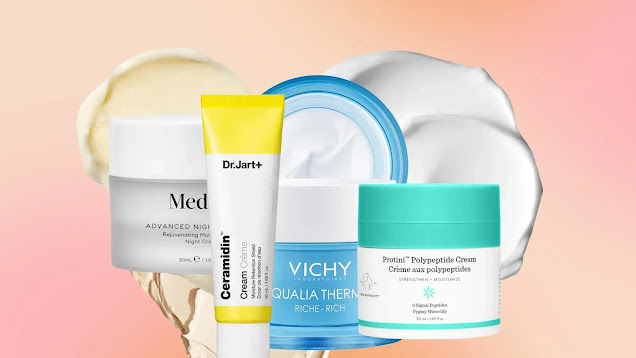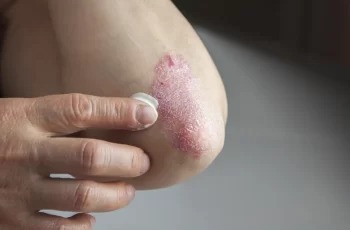
What causes excess sebum production?
Sebum is a word that many people with oily skin often hear. Some people consider it troublesome and the cause of annoying breakouts, while others, like those with dry skin, dream of having enough sebum on their face to make it more manageable and comfortable.
However, do you know what shea butter is exactly? What does it do for the skin? Why is excess sebum production a problem? Let’s find out more…
What is shea butter and what is it made of?
Sebum is a mixture of fatty acids, sugars, waxes and other chemicals that occurs naturally on the skin and is essential for skin health. The sebaceous glands control the amount of sebum released onto the skin. Sebum then performs the job of moisturizing the skin and binding the skin’s moisture, keeping the skin waterproof and maintaining a healthy skin flora. By flora we mean the skin’s microbiome, which plays an important role in the health of the skin. You can find out more about the skin flora in our blog post What is the skin microbiome and why is it important?
What causes increased sebum production?
If you notice your skin becoming too oily, it could be due to an imbalance in your skin for several reasons:
Excessive sebum production can be a result of pregnancy
Excessive sebum production can occur throughout adolescence
Excessive sebum production can be a result of hormonal changes
Excessive sebum production can be a sign of misusing skin care products such as scrubs
Excessive sebum production can be caused by irritated skin
Excessive sebum production is caused by dehydration
Excessive sebum production is a genetic predisposition
There are several reasons why you may notice your skin producing too much sebum. You may notice that your skin’s oiliness changes during your menstrual cycle due to hormonal changes. It can also be caused by heat exposure and exercise.
If your skin is prone to breakouts and rashes, you probably know that sebum can affect the severity of your breakouts. While it may be tempting to opt for a strong exfoliant and ruthlessly penetrate your skin to achieve a “squeaky clean” feeling, you may find that these harsh chemicals and skin-damaging ingredients actually strip your skin of every last drop of sebum. As a result, you’ll notice that your skin’s defenses are compromised and your skin’s imbalance can accelerate sebum production. This can cause your face to feel and look oilier than before, and your acne and blemishes to become worse.
One thing to always keep in mind is that you need sebum for your skin to function optimally. Yes, it can be discouraging to think of sebum as a primary skin benefit (especially if you have a blemish-prone skin type). There are ways to control sebum production and reduce excess oil. We’ll tell you about those right now.
How to Get Rid of Excess Sebum?
Here are some simple ways to reduce the amount of excess sebum on your skin:
Use the Right Cleansing Products
If you’re looking for a cleanser to help control your sebum levels, there are a few skin-health-boosting ingredients to look out for. First, salicylic acid is the only kind available that can penetrate deep into the lower layers of the skin to clear out clogged pores that can cause blackheads and acne. Regular use of a cleanser containing salicylic acid can keep your skin clear without losing important sebum. You can read our blog post on the skin care benefits of salicylic acid to learn more about this effective BHA.
Other key ingredients to look out for include glycolic acid and lactic acid, as these fruit acids do a great job of chemically exfoliating the skin without causing dryness. When you find the skincare products and ingredients that work best for your skin, you’ll find that the health of your complexion and overall appearance remain healthy and balanced. If you find that a product you’ve tried irritates your skin, you must stop using it immediately.
Tailor your skincare routine to your skin type
Sebum production varies with the seasons and hormonal changes. If you find that your skin and body have become oilier than usual, it might be a good idea to adjust your routine. In this case, opt for an oil-free cleanser, chemical toner, and a lightweight gel moisturizer with active ingredients to nourish your skin. Adding a clay mask to your routine every two weeks can also help restore skin balance and clarity.
Avoid harsh scrubs and tools
As we’ve already mentioned, we know how difficult it is to not reach for abrasive peels filled with nut and fruit seed particles that dig deep into the skin. Your skin might feel fine for five minutes, but what you can’t imagine is that your skin will panic and try to compensate for the skin trauma by producing too much sebum, leaving you all over again.
Consult your doctor
If you ask your GP for advice, there are some other options you can try. There are various oral medications that can help reduce excess sebum, such as: B. Retinoids, which can be taken orally or topically. These medications are very effective and should not be attempted without the advice of a doctor or dermatologist.
Now you know a little more about Tarlo, and why he isn’t the big bad we’ve been led to believe for so long. Without sebum, our skin wouldn’t be able to function, and its key role in maintaining a healthy skin flora should actually earn our respect. At the very least, don’t use harsh chemicals to cleanse your skin, or overreact when that time of the month happens to affect our mood and skin. Just remember to practice good skin care habits and use products that are appropriate for your skin type, and you won’t have anything to worry about!


